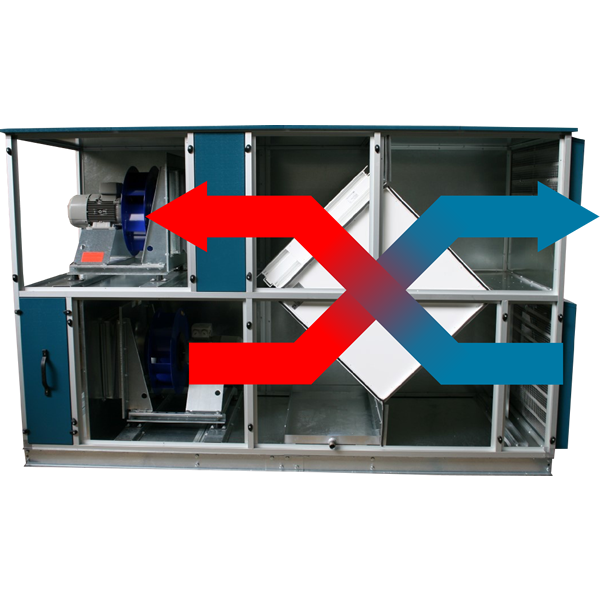Heat recovery is becoming more relevant as we move towards the next levels of energy conservation, not only in general air conditioning but more in Kitchen Extract systems, or process air, where energy can be recovered and used in the restaurant or Kitchen make up during winter, or in the offices of a factory space.
The plate heat recovery units are selected for inclusion in the AHU based on a minimum 73% recovery, at the manufacturers design criteria, which has been adopted across the industry. These can include a bypass solution for when recovered heat is not required, or when additional free cooling is required. Complete bypass circuits can be included for controls of “early morning start-up” situations.
Run around coils are still a viable solution, but offer lower efficiencies once the pump has been taken into account, but do ensure there is no leakage between the incoming and exhaust air streams, so are a solution in hospital operating theatres where full fresh air operation is a requirement.
Three way mixing is available where the return air is dumped to make way for the required fresh air content being drawn into the system to meet building regulations. This methology can only be used in specific situations, where the exhaust air is safe to breath, and treated sufficiently to ensure freshness, from odour or taint.

